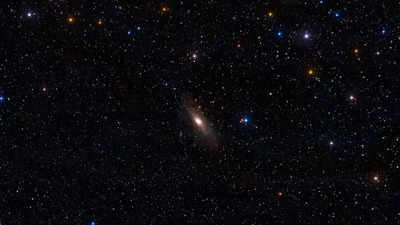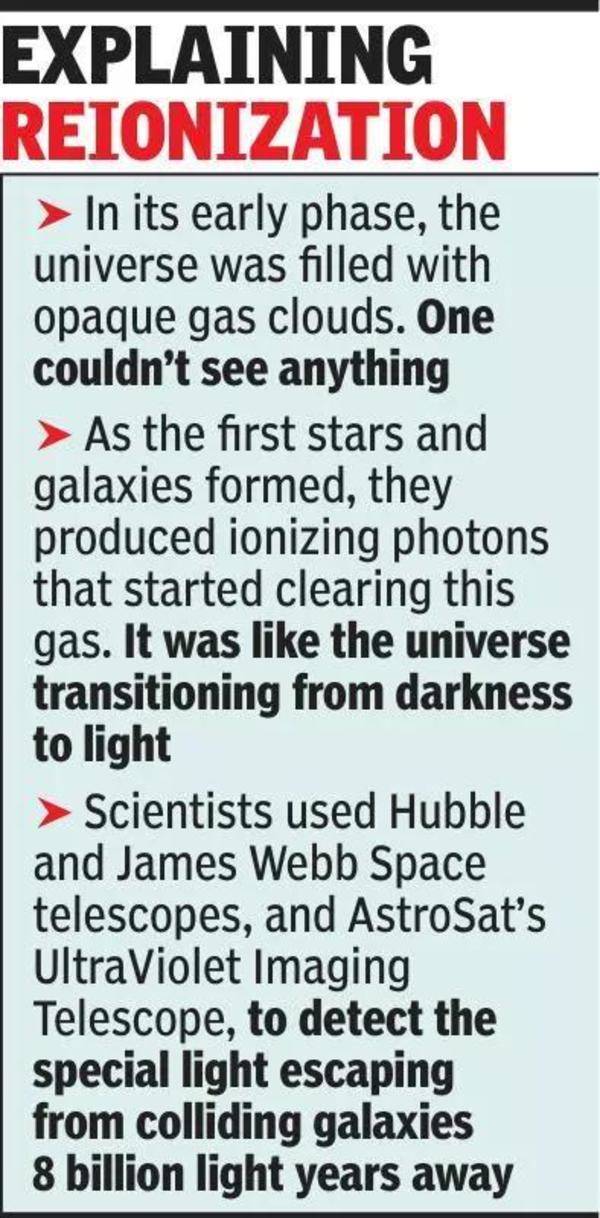Trending
Pune scientists shed light on how universe woke from ‘dark ages’
Scientists from Pune's IUCAA discovered clues on how light pierced through cosmic fog post-Big Bang, making the universe transparent. Observations of merging galaxies revealing rare ultraviolet light suggest that such crashes in the early universe played a significant role in this transformation.


After the Big Bang, the universe was filled with a thick fog of hydrogen gas that blocked the ultraviolet light (emitted by the first stars) from freely travelling.

Over time, this dark universe became transparent, allowing light to travel across vast distances. Inter-University Centre for Astronomy and Astrophysics (IUCAA) researchers said they have found a clue that might help explain this cosmic makeover. Using powerful telescopes, they observed two massive galaxies merging about 8 billion light-years away.
Scientists have long wondered what provided enough light to clear the early universe's fog. IUCAA researcher Soumil Maulick said, "We can't directly observe the early universe, and when it went from being dark and opaque to bright and visible. So we look at galaxies in the nearby universe to understand what kind of galaxies might have been responsible for this process."
Maulick said the discovery suggests that when galaxies crash into each other, they might release a lot of this special radiation. "These galaxy crashes were much more frequent in the early universe. If they all leaked light like this, they could have played a big role in lighting up the cosmos," he said
The study found that the amount of light (Lyman-continuum or LyC photons) escaping from the galaxy system is consistent with what's needed to complete re-ionization, a process that made the early universe transparent from being dark and opaque.
Saha said, "Mergers between galaxies are known to trigger bursts of star formation. This could be contributing to the higher production of ionizing photons (which can strip electrons from hydrogen and allow light to travel freely). The interaction of galaxies through mergers likely plays a significant role in this. We found that the light from AF13753, the galaxy we studied, likely escapes through narrow, dust-free channels in it, making it harder to detect. But because of the merger, light may still find its way out along specific paths."
Maulick added, "AF13753 doesn't fit the usual profile of galaxies that leak this kind of radiation. Despite this, it still has a significant fraction of light escaping, which suggests merging systems like these might have played an important role in making the universe transparent after the cosmic dark ages."
Scientists used powerful telescopes, including the Hubble Space Telescope (HST), James Webb Space Telescope (JWST), and AstroSat's UltraViolet Imaging Telescope (UVIT), to detect the special light escaping from colliding galaxies 8 billion light-years away. This study was recently published in ‘The Astrophysical Journal', an international journal.
"Scientists were able to see something that happened billions of years ago because light, though incredibly fast, takes time to travel across the vast distances of space. The light we observe today was emitted billions of years ago and has only just reached us," said Maulick.
End of Article
FOLLOW US ON SOCIAL MEDIA











